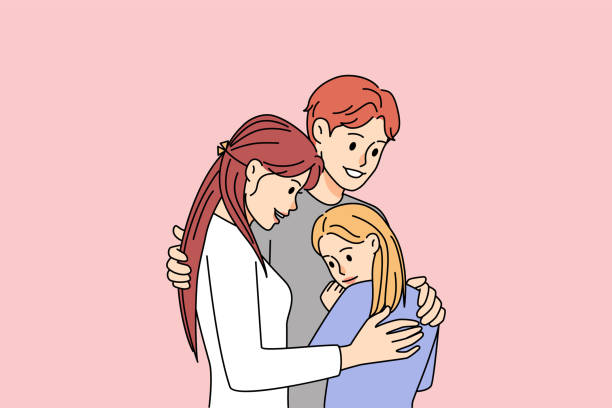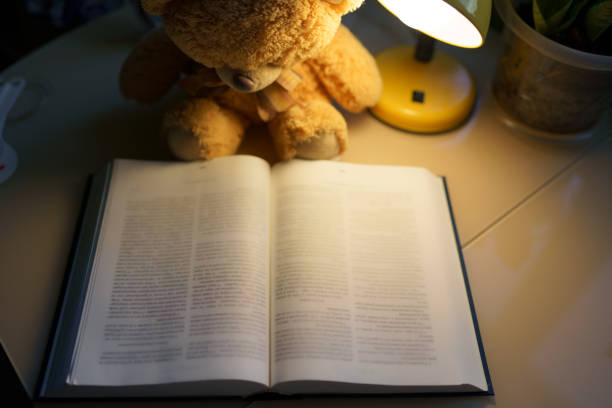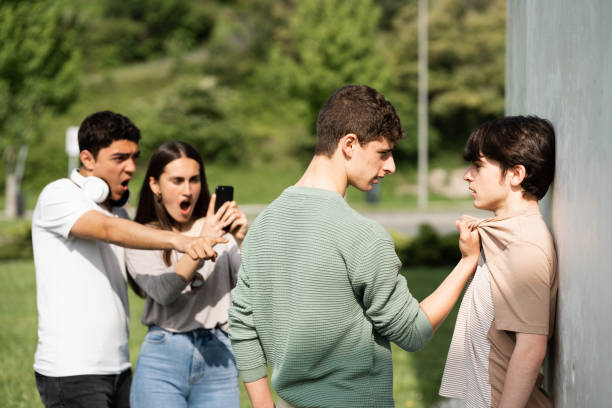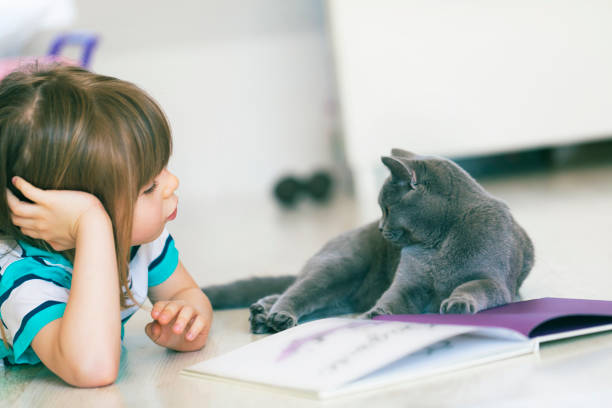How To Write Reunion Scenes (10 Best Ways You Need TO Know)
The art of storytelling is intrinsically linked to our shared human experiences and emotions. Among the most emotionally charged and poignant moments in literature, film, and all forms of narrative art are the reunion scenes.
These are the moments where characters, long separated by time, distance, or even conflict, come together once again, evoking feelings of joy, relief, and often, profound transformation.
Reunion scenes have the power to move audiences to tears or to rapturous applause, as they encapsulate the complexities of the human condition: love, loss, longing, and the enduring resilience of the human spirit.
They serve as pivotal turning points, adding depth to character development and driving plot progression. Whether it’s a long-lost lover, a family member, a dear friend, or even a reconciliation with one’s own past, reunion scenes are emotional fulcrums around which powerful stories pivot.
In this guide, we will embark on a journey into the heart of reunion scenes, exploring the nuanced art of crafting them in your writing.
We’ll delve into the intricate web of emotions, character dynamics, and storytelling techniques that make these scenes resonate deeply with your readers.
By the end, you’ll be equipped with the tools and insights to master the creation of unforgettable reunion scenes, leaving a lasting impact on your audience and your own storytelling prowess.
So, let’s embark on this quest to write reunion scenes that tug at the heartstrings and linger in the reader’s memory long after the book is closed or the credits roll.
How To Write Reunion Scenes
To write a direct answer on how to write reunion scenes in a story or screenplay, follow these steps:
Set the Stage
Start by describing the location and atmosphere of the reunion. Is it a high school reunion in a banquet hall, a family reunion in a backyard, or a surprise meeting in a coffee shop? Paint a vivid picture so readers can visualize the setting.
Character Reactions
Show the emotional reactions of the characters involved. Do they hug, cry, or remain distant? Use body language and dialogue to convey their feelings. Are there any initial tensions or awkward moments?
Reveal Backstory
Use the reunion scene as an opportunity to reveal backstory. Characters can reminisce about the past, share what has happened since they last met, and catch up on each other’s lives. This can provide depth to the characters and the overall story.
Conflict and Resolution
Introduce conflict or unresolved issues if it fits the story. Reunions can be a great time to address long-standing grievances or misunderstandings, leading to emotional growth or reconciliation.
Dialogue
Craft meaningful and authentic dialogue. Make sure the characters’ words match their personalities and emotions. Dialogues can reflect the joy, nostalgia, or tension of the reunion.
Sensory Details
Engage the reader’s senses by describing the sights, sounds, and even smells of the scene. Are there the sounds of laughter, clinking glasses, or nostalgic music in the background?
Pacing
Control the pacing of the scene. Allow it to unfold naturally, giving each character their moment and focusing on the most significant interactions. Avoid rushing through it.
Subtext
Consider what’s left unsaid. Subtext can add depth to the reunion scene, as characters may have hidden feelings or secrets.
Symbolism
Use symbolism to convey the significance of the reunion. This could be a meaningful object, gesture, or a recurrent motif that ties into the story’s theme.
Closing Moments
Conclude the reunion scene with a sense of closure or anticipation. This could be a heartfelt goodbye, a promise to stay in touch, or an unresolved issue that leaves the reader eager to see what happens next.
Remember that the effectiveness of a reunion scene depends on the context of your story, the relationships between the characters, and the emotions you want to convey. Tailor the scene to fit your narrative and characters’ development.

Understanding the Reunion Scene
Understanding the reunion scene is like holding a key to the hidden chambers of your characters’ souls, where emotions are secrets whispered to the heart.
It’s the moment where the past and present collide, where love and heartbreak dance a tango of breathtaking intensity.
To master the art of crafting a reunion scene is to become a conductor of emotions, orchestrating the crescendo of longing, the symphony of resolve, and the sweet harmonies of reconnection.
In this chapter, we’ll unlock the secrets of anticipation, character motivations, and the perfect stage setting, guiding you to craft scenes that will leave your readers breathless, yearning for more, and celebrating the beauty of literary reunions.
Definition and purpose of a reunion scene
A reunion scene is the heartbeat of emotional storytelling, a potent narrative device designed to resurrect buried connections and awaken dormant sentiments.
Its purpose is to evoke an array of emotions, from joy and relief to nostalgia and reconciliation. This climactic juncture in a narrative serves as a mirror reflecting the intricate evolution of characters and their relationships over time.
Reunion scenes allow us to witness transformation, forgiveness, and the rekindling of bonds, highlighting the depth of human resilience and the enduring power of love, friendship, or family ties.
These scenes are not merely plot devices; they are windows into the souls of characters, revealing their growth, vulnerabilities, and the immeasurable weight of their shared history.
The reunion scene, at its core, is the catharsis that resonates with readers, leaving them with a visceral understanding of the characters’ journey and an indelible emotional connection to the story.
Preparing for Your Reunion Scene
Preparing for your reunion scene is akin to crafting a masterpiece, a symphony of anticipation, and a tantalizing glimpse into the labyrinth of your characters’ hearts.
It’s the art of planting the seeds of longing, sewing the threads of their past, and letting time weave its intricate tapestry of emotions.
Think of it as the calm before the storm, where backstories and motivations coalesce to create a perfect storm of feelings.
As you embark on this journey, you become a sculptor of narrative clay, molding the contours of your characters’ desires and destinies.
The canvas is blank, and the possibilities are endless. In this chapter, we’ll explore the alchemy of anticipation, the hidden gems in character motivations, and the science of setting the stage for a reunion that will electrify your readers’ souls.
Prepare to ignite emotions, awaken nostalgia, and draw your audience closer to the heart of your story, for the reunion scene is a tantalizing promise, and its preparation is the art of keeping that promise alive.
Building anticipation: foreshadowing and backstory
Building anticipation within your narrative is like constructing a cathedral of emotions, with foreshadowing and backstory as the stained glass windows that filter the light of expectation.
Foreshadowing is the whisper of destiny in your reader’s ear, hinting at what’s to come, and creating an air of suspense.
It’s the subtle breadcrumbs that pave the way for a climactic reunion, leaving your audience eagerly turning the pages. Backstory, on the other hand, is the foundation upon which your characters stand.
It’s the richness of their shared history, the layers of experiences that form the emotional bedrock of the impending reunion.
As you master the art of weaving these elements together, you become an architect of reader’s emotions, constructing a narrative that resonates deeply and resonates with the promise of a reunion scene that’s been carefully anticipated and long-awaited.
Character Development and Conflict
Character development and conflict are the twin constellations that guide your narrative through the vast cosmos of storytelling.
Like celestial bodies orbiting each other, they create the gravitational pull that keeps your readers entranced. Character development is the stardust of transformation, breathing life and dimension into your protagonists.
It’s the evolution of their inner worlds and the journey towards becoming more profound versions of themselves.
Conflict, on the other hand, is the cosmic clash of wills and desires, the fiery supernovas that illuminate their struggles and drive the narrative forward.
It’s the crucible in which your characters are tested, their mettle refined, and their destinies ultimately revealed.
As you navigate this celestial ballet of character development and conflict, you become the cosmic conductor of your storytelling universe, orchestrating the harmonious crescendos and explosive dilemmas that will leave your readers spellbound, forging an unforgettable connection to your characters and their journeys.

Exploring character growth and change leading up to the reunion
Exploring character growth and change leading up to the reunion is like tracing the lines of a portrait, witnessing the subtle brushstrokes that transform a blank canvas into a living, breathing masterpiece.
It’s in these moments of evolution that characters shed their former selves, like snakes shedding old skins, to emerge as more complex, authentic, and relatable beings.
The journey toward the reunion becomes a transformative odyssey, and the reunion scene itself is the culmination of their metamorphosis.
This evolution is the heartbeat of your story, where the past, present, and future intersect, and the characters, marked by their experiences, are thrust into an emotional vortex, where the gravity of their changes collides with the anticipation of their reunion, creating a potent and unforgettable narrative moment.
Creating Atmosphere and Setting
Creating atmosphere and setting is like painting the backdrop for a theatrical masterpiece, where the stage itself becomes a character in the narrative.
It’s a symphony of sensory impressions that envelops your readers, casting a spell that lingers long after the final page is turned.
This is where the very air hums with emotions, where the environment itself whispers secrets and reveals hidden truths.
The setting is not just a backdrop; it’s a storyteller in its own right, a silent witness to the drama unfolding within its embrace.
Every creaking floorboard, every rustling leaf, every whispering breeze carries the weight of anticipation and history.
As you master the art of crafting atmosphere and setting, you become a magician, conjuring worlds that immerse your readers so deeply that they can almost touch the emotions in the air.
The setting is not just a stage; it’s an enchantment, and it’s within this enchantment that the reunion scene transcends mere words, becoming an indelible, visceral experience that resonates long after the final curtain falls.
Descriptive prose: evoking emotions through vivid descriptions
Descriptive prose is the alchemical art of infusing life into words, where the mundane becomes magical, and emotions take shape through vivid descriptions.
It’s the paintbrush that colors the canvas of your reader’s imagination, bringing the scenes and characters to life with a brilliance that leaves them emotionally charged.
In the world of storytelling, the power of these descriptions lies not only in their visual impact but in their ability to stimulate a multitude of senses and emotions.
A well-crafted description isn’t just about what is seen but what is felt, heard, smelled, and even tasted. It’s in these meticulously chosen words and phrasings that the atmosphere and mood are conjured, immersing your readers in the very heart of the narrative.
Like a sorcerer weaving incantations, your descriptive prose becomes the catalyst for an emotional connection, leaving your readers not merely as observers, but as participants in the rich tapestry of your story, where emotions are vividly felt and forever etched into their hearts and minds.
Tension-Building Techniques
Tension-building techniques are the literary tightrope walk, the intricate dance of suspense, and the electric current that runs through the narrative’s veins.
They are the hidden trapdoors and concealed passageways that captivate your readers, holding them in a state of exhilarating uncertainty.
In this dramatic symphony, you are the conductor, orchestrating the heart-pounding crescendos and delicate pauses that keep your audience on the edge of their seats.
Tension isn’t just about raising questions but skillfully withholding answers, about crafting moments of uncertainty that push your characters and readers to their limits.
It’s the promise of revelation and the allure of the unknown, transforming your story into an addictive enigma that begs to be unraveled.
As you master these techniques, you evolve into a storyteller of intrigue, a puppeteer of anticipation, and a conjurer of emotions that leave your readers breathless, eagerly turning the pages to discover what lies just beyond the next turn in the narrative labyrinth.
The element of surprise: subverting expectations
The element of surprise is the narrative’s adrenaline shot, the thunderclap that resonates through the pages, and the artful disruption of predictable patterns.
It’s the pivot point where anticipation collides head-on with the unexpected, creating a shockwave of emotions that resonates deeply within your readers.
Subverting expectations isn’t just about plot twists; it’s about challenging assumptions, defying conventions, and turning the storytelling conventions on their heads.
It’s in these moments of delightful subversion that your narrative transcends the ordinary, forging an indelible connection with your audience.
Like a magician revealing the unanticipated flourish at the end of a trick, you become the master of surprise, leaving your readers not just awestruck, but deeply immersed in the unfolding mystery, eagerly anticipating the next revelation and the cascade of emotions that come with it.
The element of surprise, when wielded with precision, elevates your storytelling from the ordinary to the extraordinary.

Writing the Reunion Scene
Writing the reunion scene is akin to composing a heart’s symphony, where every word, every pause, and every emotion is a note played on the strings of your reader’s soul.
It’s the moment where anticipation and destiny collide, creating a whirlwind of emotions that reverberates through the narrative like a thunderclap in the quiet of night.
In this chapter, you’re not just a writer; you’re a conductor, leading your characters through a dance of reconnection that transcends mere words.
The reunion scene is the culmination of your characters’ journeys, a pivotal climax where time, emotion, and fate converge to produce a crescendo of feelings.
As you craft this scene, you are a maestro, conducting the orchestra of your characters’ emotions with your words as the baton.
This is where your storytelling prowess reaches its zenith, leaving your readers enraptured, moved, and forever entwined with the emotional tapestry you’ve so artfully woven.
The power of sensory details and sensory language
The power of sensory details and sensory language in storytelling is the alchemy that transforms words on a page into a multisensory experience.
It’s the gateway through which your readers step into the vivid world you’ve created, immersing themselves in the rich tapestry of sights, sounds, scents, tastes, and textures.
By deftly weaving sensory details into your narrative, you can evoke emotions and forge a profound connection between your readers and your characters’ experiences.
It’s in the dew-kissed petals of a rose, the distant echo of laughter, the aroma of freshly baked bread, or the rough texture of a well-worn leather chair that emotions come to life, transporting your audience into the heart of your story.
Sensory language is the brush that paints a thousand pictures, the tune that hums a thousand melodies, and the essence that lingers long after the final word is read.
It’s in these details that your storytelling transcends the ordinary, leaving your readers not just as spectators but as participants, as they can taste the emotions, touch the atmosphere, and feel the narrative unfold around them.
Emotional Resonance
Emotional resonance is the true heartbeat of storytelling, the invisible thread that binds your readers’ hearts to the souls of your characters.
It’s the surge of empathy that surges through the narrative like electricity, connecting the audience to the emotional pulse of the story.
In the realm of storytelling, emotional resonance isn’t just about making readers feel; it’s about making them experience, intimately and intensely, the joys, sorrows, and triumphs of your characters.
Like a master conductor, you have the power to orchestrate a symphony of emotions that reverberates long after the final chapter ends, leaving your readers forever entangled in the narrative’s emotional web.
Here, you’re not just a storyteller; you’re an emotional sorcerer, weaving spells of connection and transcendence, ensuring your narrative is not merely read but felt in the deepest chambers of the heart.

Eliciting reader empathy and emotional engagement
Eliciting reader empathy and emotional engagement is the storyteller’s ultimate alchemy, a delicate dance of words that transforms readers into participants, not just spectators.
It’s about creating characters so vivid, so relatable, that readers see themselves in the struggles and triumphs of your literary creations.
It’s not just about telling a story but inviting readers to step into the shoes of your characters, to feel their joys, share their pain, and experience their growth.
By peeling back the layers of your characters’ souls and revealing their vulnerabilities, readers find their own humanity reflected in the narrative, and this shared connection fosters a profound emotional bond.
As a writer, you’re not merely weaving a tale; you’re forging a bridge between your characters and your readers’ hearts, crafting an experience that resonates long after the book is closed.
The magic of storytelling lies in this empathetic connection, as it’s through this bond that your narrative becomes a living, breathing entity, capable of touching the deepest recesses of the human spirit.
Crafting a Memorable Ending
Crafting a memorable ending is like the grand finale of a mesmerizing performance, where all the plot threads and character arcs seamlessly converge, leaving the audience breathless with awe and satisfaction.
It’s the crescendo, the exclamation point at the end of your literary masterpiece, and the lasting impression that lingers in the minds of your readers.
This is where the emotional chords you’ve struck throughout the narrative culminate in a symphony of resonance.
The memorable ending is more than just a conclusion; it’s a revelation, a reflection, and a revelation. It’s a journey’s culmination, where characters evolve, conflicts are resolved, and, ultimately, the story finds its profound purpose.
As a writer, you hold the power to shape the lasting image your readers carry, ensuring that the final words resonate in their hearts, leaving them not just as passive consumers of your tale but as captivated witnesses to its grand finale, forever touched by the beauty of your storytelling.
A The impact of the reunion on the characters and the story
The impact of the reunion on the characters and the story is a seismic shift, a moment of profound transformation that sends ripples of change throughout the narrative.
It’s the culmination of journeys, the realization of long-sought dreams, and the catharsis that validates the characters’ trials and tribulations.
The reunion is not merely an event; it’s a catalyst, sparking character growth, resolving conflicts, and driving the story’s ultimate purpose.
It is the juncture where past and present converge, and the characters’ arcs come full circle. This emotional epicenter propels the narrative forward, forging connections, healing wounds, and unveiling hidden truths, leaving the characters forever altered.
The impact of the reunion transcends the bounds of the story, seeping into the hearts of readers, ensuring they too are forever changed by the profound and resonant moment they’ve witnessed.
It is within this impact that the reunion scene becomes not just an event but a touchstone, an indelible mark on the narrative and the readers themselves.
Revising and Polishing Your Reunion Scene
Revising and polishing your reunion scene is akin to sculpting a masterpiece from a raw block of marble, chiseling away the excess to reveal the true essence of your narrative gem.
It’s the diamond in the rough, waiting for the jeweler’s skilled hand to transform it into a dazzling gemstone. Revision is the art of distillation, where you refine the emotions, clarify the nuances, and hone the language to perfection.
It’s the fine-tuning that elevates your scene from mere words on a page to a symphony of emotions that resonate in the reader’s heart.
As you meticulously shape and polish, you become both a craftsman and a maestro, ensuring that every word, every pause, and every emotion is orchestrated with precision.
Revising is the journey where you strip away the superfluous layers to reveal the emotional core, making your reunion scene shine with the brilliance of a perfectly cut diamond, leaving your readers not just captivated but deeply moved by the story’s emotional resonance.
Self-editing tips and techniques
Self-editing is the writer’s art of transformation, where the raw clay of a manuscript is sculpted into a work of literary beauty.
It’s a process that requires both a discerning eye and a compassionate heart, as you must be both the writer and the editor, the creator and the critic.
The tips and techniques of self-editing encompass a myriad of skills, from scrutinizing grammar and syntax to fine-tuning character arcs and dialogue.
It’s about stepping back from your work, gaining a fresh perspective, and assessing it with the ruthless precision of an editor’s pen.
It’s a journey of iteration, where you unearth hidden gems, mend fractures, and polish the narrative to a high sheen.
The craft of self-editing lies in the art of balancing objectivity and passion, understanding that your words, like clay, can be molded and remolded to unveil the true essence of your storytelling.
Self-editing isn’t merely the final lap of your writing journey; it’s the stage where your narrative truly comes to life, where your storytelling prowess shines through the polished prose, leaving your readers captivated by the beauty of your work.

Examples from Literature
Examples from literature are the luminous constellations that guide us through the vast expanse of storytelling possibilities.
They are the stars that light our path, the mentors that teach us the art of narrative, and the keys that unlock the treasure chest of literary wisdom.
In the pages of celebrated works, we encounter the brilliant strokes of masterful authors who have painted vivid scenes, crafted unforgettable characters, and composed stories that resonate through the ages.
Through these examples, we become time travelers, journeying through the annals of literature to discover the techniques, styles, and nuances that have captivated readers for generations.
These literary masterpieces are our compass, and they illuminate the way, offering insights, inspiration, and a sense of the boundless possibilities of storytelling.
With examples from literature, we don’t merely learn from the greats; we become part of a timeless conversation, taking our place in the grand tapestry of storytelling, ready to craft our own unique narratives and join the ranks of those who have left an indelible mark on the literary universe.
Analyzing well-known reunion scenes in literature
Analyzing well-known reunion scenes in literature is like dissecting the heartbeats of classic tales, extracting the essence of emotional crescendos.
These scenes, etched in the annals of literary history, are touchstones for writers and readers alike, revealing the artistry of storytelling at its finest.
They are moments where the threads of anticipation and character development converge, igniting emotional fireworks that leave an indelible mark on our literary consciousness.
By delving into these well-loved scenes, we uncover the secrets of resonant storytelling: the power of pacing, the subtleties of character expression, and the orchestration of suspense.
Each reunion scene is a masterclass in evoking emotions and latching onto the reader’s heartstrings, offering profound insights that inform our own craft and inspire us to create stories that, like these classics, will be cherished through the ages.
Frequently asked questions about How To Write Reunion Scenes
What is a reunion scene in storytelling?
A reunion scene is a pivotal moment in a story where characters who have been separated or distant from each other come together, either physically or emotionally. It can serve to rekindle relationships, reveal backstory, and advance the plot.
Why are reunion scenes important in storytelling?
Reunion scenes are essential because they provide opportunities to evoke powerful emotions, deepen character development, and drive the narrative forward. They can create connections between characters and resonate with the audience’s own experiences.
How can I make my reunion scene emotionally impactful?
To make your reunion scene emotionally impactful, focus on authentic character reactions, genuine dialogue, and showing the significance of the moment through sensory details and symbolism. Infuse it with the characters’ unique personalities and backstories.
What are some common challenges when writing reunion scenes?
Common challenges include striking the right balance between sentimentality and melodrama, avoiding clichés, and ensuring that the scene serves a purpose within the broader story. It’s also important to maintain consistency with the characters’ development and the overall tone of the narrative.
Should every story include a reunion scene?
Not necessarily. The inclusion of a reunion scene should align with your story’s themes and the development of its characters. It should feel organic to the plot and contribute to the overall narrative. If a reunion scene doesn’t serve a purpose, it might be best left out.
How can I create tension and conflict in a reunion scene?
Tension and conflict can be introduced by having unresolved issues or unspoken feelings between the characters. These issues can resurface during the reunion, creating dramatic moments that add depth to the scene.
Can a reunion scene be symbolic in a story?
Absolutely. A reunion scene can carry symbolic weight in a story. It can symbolize reconciliation, personal growth, or the resolution of a central conflict. Consider using objects, gestures, or recurring motifs to enhance the scene’s symbolic significance.
How long should a reunion scene be in a story or screenplay?
The length of a reunion scene depends on its importance to the narrative. Some may be brief, while others may span several pages or scenes. The key is to maintain the reader’s or viewer’s interest and ensure that the scene fulfills its purpose.
Are there any common pitfalls to avoid when writing reunion scenes?
Common pitfalls include overusing clichés, making the scene overly sentimental, or dragging it out unnecessarily. Ensure that the scene remains true to your characters and advances the plot.
Can I get inspiration for reunion scenes from real-life experiences?
Absolutely. Real-life reunions can provide valuable inspiration for writing authentic and relatable reunion scenes. Pay attention to the emotions, conversations, and dynamics in real-life reunions to make your scenes more genuine.
Remember that writing a reunion scene can be a powerful tool for connecting readers or viewers to your characters and their journey. Tailor your approach to suit the needs of your story and the development of your characters.
Conclusion
In the realm of storytelling, crafting reunion scenes is akin to painting a masterpiece, orchestrating a symphony, and casting a spell.
It is the art of evoking emotions, connecting with readers on a visceral level, and leaving a lasting imprint on their hearts and minds.
Through the pages of this guide, we’ve ventured into the heart of reunion scenes, uncovering the secrets to their creation.
From understanding the core elements to wielding the power of sensory language, from harnessing tension-building techniques to nurturing emotional resonance, and from self-editing with precision to drawing inspiration from literary examples, we’ve embarked on a journey of storytelling mastery.
The impact of a well-crafted reunion scene reaches beyond the narrative, forging connections between the characters and readers, and reminding us of the timeless power of human emotions.
As writers, we are the architects of these moments, and through our words, we have the incredible ability to elicit empathy, inspire catharsis, and create narratives that transcend time.
With each reunion scene we craft, we take our readers on a journey, inviting them to rediscover the beauty of human connections, reminding them of the enduring spirit of love and longing, and leaving them with stories that will linger long after the final chapter is read.
So, may your reunion scenes be not just scenes, but unforgettable moments, etched into the hearts of those who journey with you, and may your storytelling continue to resonate, connect, and inspire.






